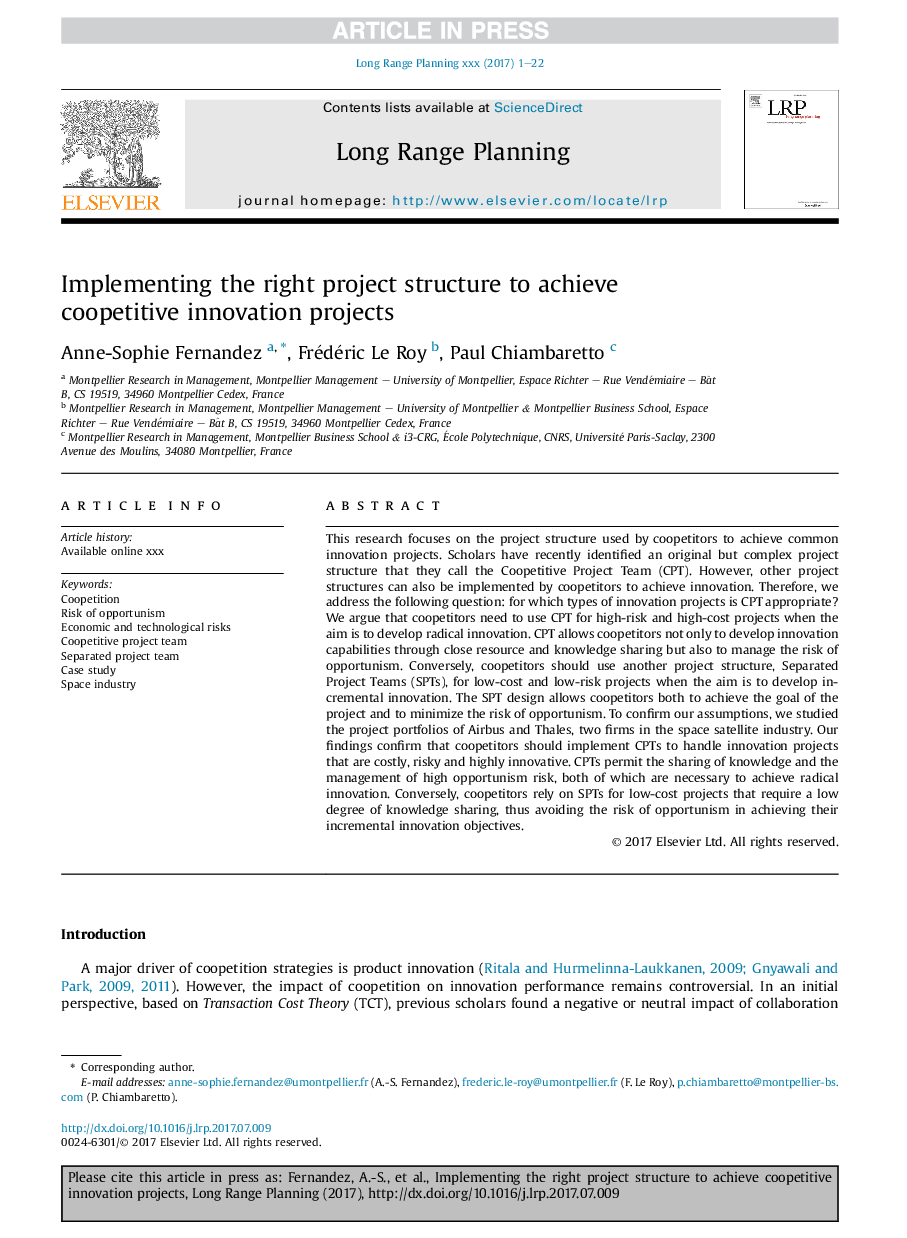| کد مقاله | کد نشریه | سال انتشار | مقاله انگلیسی | نسخه تمام متن |
|---|---|---|---|---|
| 7426864 | 1482904 | 2018 | 22 صفحه PDF | دانلود رایگان |
عنوان انگلیسی مقاله ISI
Implementing the right project structure to achieve coopetitive innovation projects
ترجمه فارسی عنوان
پیاده سازی ساختار مناسب پروژه برای دستیابی به پروژه های نوآورانه همکاری
دانلود مقاله + سفارش ترجمه
دانلود مقاله ISI انگلیسی
رایگان برای ایرانیان
کلمات کلیدی
کوپرتینت، خطر اپورتونیزم، خطرات اقتصادی و فنی، تیم پروژه همکاری، تیم پروژه جدا شده، مطالعه موردی، صنعت فضایی،
موضوعات مرتبط
علوم انسانی و اجتماعی
مدیریت، کسب و کار و حسابداری
کسب و کار و مدیریت بین المللی
چکیده انگلیسی
This research focuses on the project structure used by coopetitors to achieve common innovation projects. Scholars have recently identified an original but complex project structure that they call the Coopetitive Project Team (CPT). However, other project structures can also be implemented by coopetitors to achieve innovation. Therefore, we address the following question: for which types of innovation projects is CPT appropriate? We argue that coopetitors need to use CPT for high-risk and high-cost projects when the aim is to develop radical innovation. CPT allows coopetitors not only to develop innovation capabilities through close resource and knowledge sharing but also to manage the risk of opportunism. Conversely, coopetitors should use another project structure, Separated Project Teams (SPTs), for low-cost and low-risk projects when the aim is to develop incremental innovation. The SPT design allows coopetitors both to achieve the goal of the project and to minimize the risk of opportunism. To confirm our assumptions, we studied the project portfolios of Airbus and Thales, two firms in the space satellite industry. Our findings confirm that coopetitors should implement CPTs to handle innovation projects that are costly, risky and highly innovative. CPTs permit the sharing of knowledge and the management of high opportunism risk, both of which are necessary to achieve radical innovation. Conversely, coopetitors rely on SPTs for low-cost projects that require a low degree of knowledge sharing, thus avoiding the risk of opportunism in achieving their incremental innovation objectives.
ناشر
Database: Elsevier - ScienceDirect (ساینس دایرکت)
Journal: Long Range Planning - Volume 51, Issue 2, April 2018, Pages 384-405
Journal: Long Range Planning - Volume 51, Issue 2, April 2018, Pages 384-405
نویسندگان
Anne-Sophie Fernandez, Frédéric Le Roy, Paul Chiambaretto,
